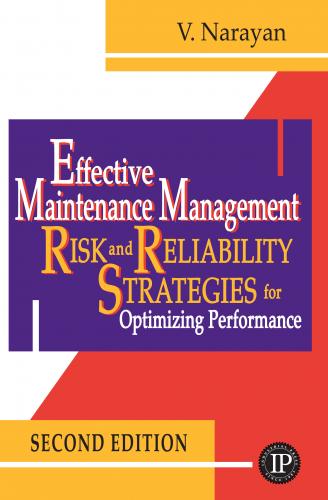The objective is to have an acceptable survival probability at the time of the test. The difference in the number of survivors, calculated using the exact and approximate solutions is quite small, as can be seen in Figure 3.11. The mean availability and survival probability are related, and this is illustrated in Figure 3.12. The relationship is linear over the range under consideration.
Figure 3.10 Mean availability approximation.
Figure 3.11 Survivors; lower curve = exact value, upper curve = linear approximation
Figure 3.12 Mean availability and survival probability.
We will use this example to develop a generally applicable method to determine test intervals for hidden functions. The objective of the exercise is to find a test interval T that will give us the required mean availability A, when the failure rate is Ï. We have noted that at any point in time, the availability of the item is the same as its survival probability, or the height of the R(t) curve. The mean availability is obtained by dividing the area of the R(t) curve by the base, thus,
| 3.8 |
When the hazard rate is constant, from the earlier derivation (expression 3.6),
| for t > 0 |
Subsituting,
| 3.9 |
Evaluating the integral explicity gives
| 3.10 |
This gives an exact measure of mean availability. We cannot use algebraic methods to solve the equation, as T appears in the exponent as well as in the main expression. We can of course use numerical solutions, but these are not always convenient, so we suggest a simpler approximation, as follows.
The survival probability or R(t) curve (see Figure 3.10) is nearly linear over the test interval T, under the right conditions. The mean is the arithmetic average of the height of the curve at t=0 and t=T.
The mean value of availability A is then:
| 3.11 |
| 3.12 |
or
| 3.13 |
The estimates produced by this expression are slightly optimistic. However over the range of applicability, the magnitude of deviation is quite small. Table 3.4 and Figure 3.11 show the error in using the exact and approximate equations for values of λt from 0.01 to 0.25.
Figure 3.12 shows the relationship between survival probability and mean availability. In Figure 3.13, we compare the approximate value to the exact value of mean availability over the range. It is quite small up to a value of λt of 0.2. We can see the magnitude of the error in Figure 3.14. From this, we can see that it is safe to use the approximation within these limits.
Table 3.4 Comparison of exact vs. approximate mean availability.
If the test interval is more than 20% of the MTBF, this approximation is not applicable. In such cases, we can use a numerical solution such as the Maximum Likelihood Estimation technique—refer to Edwards5 for details.
A number of failure distribution models are available. Among these are the exponential, gamma, pareto, Weibull, normal or Gaussian, lognormal, Birbaum-Saunders, inverse Gaussian, and extreme value distributions. Further details about these distributions are available in Hoyland and Rausand4 or other texts on reliability theory.
Weibull6 published a generalized equation to describe lifetime distributions in 1951. The two-parameter version of the Weibull equation is simpler and is suitable for many applications. The three-parameter version of the equation is suitable for situations where there is a clear threshold period before commencement of deterioration. By selecting suitable values of these parameters, the equation can represent a number of different failure distributions. Readers can refer to Davidson7 for details on the actual procedure to follow in doing the analysis.
Figure 3.13 Mean availability; exact vs. approximate values.
Figure 3.14 Error in estimate of availability vs. T/MTBF
The Weibull distribution is of special interest because it is very flexible and seems to describe many physical failure modes. It lends itself to graphical analysis, and the data required is usually available in most history records. We can obtain the survival probability at different ages directly from the analysis chart. We can also use software to analyze the data. Figure 3.15 shows a Weibull plot made using a commercial software application.
It is fairly easy to gather data required to carry out Weibull analysis, since time-to-failure and preventive replacement details for the failure mode are nearly all that we need. For this we need a record of the date and description of each failure. We also need the date of any preventive maintenance action that results in the component being repaired or replaced before failure occurs. Once we compute the values of the two parameters, we can obtain the distribution of failures. We can read the survival probabilities at the required age directly from the chart. We can then estimate the reliability parameters, and use this data for predicting the performance of the item.
Figure 3.15 Typical Weibull Plot.
The Weibull equation itself looks somewhat formidable. Using the simpler two-parameter version, the survival probability is given by the following expression.
| 3.14 |
where η is called a scale parameter or characteristic life, and β is called the shape parameter.
Using expression 3.14, when t = η there is a 63.2% probability that
